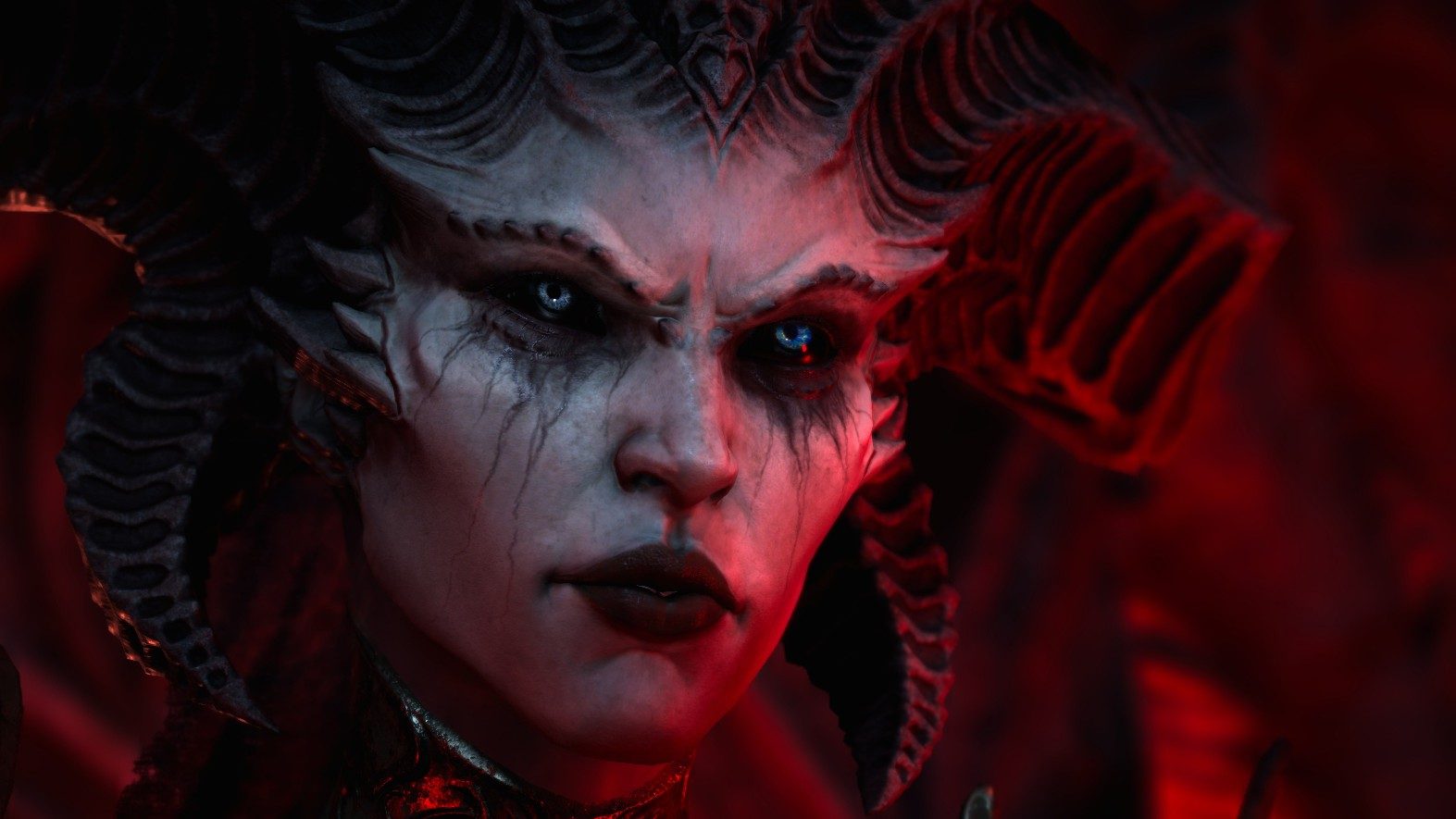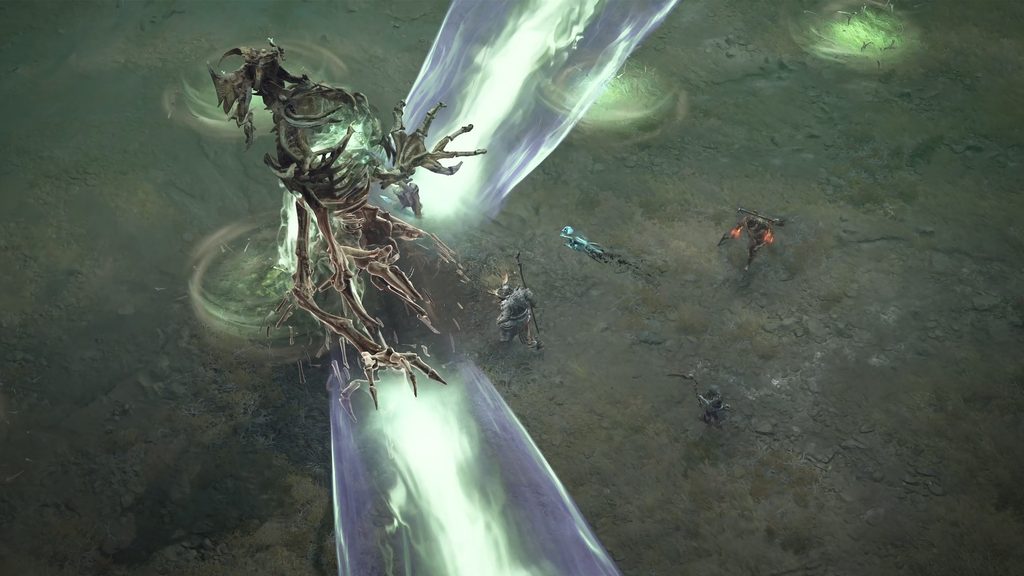SUMMARY
This is AI generated summarization, which may have errors. For context, always refer to the full article.

(Disclosure: A PlayStation 5 review code was provided by the publisher)
Diablo IV has had to carry the burden of almost insurmountable fan expectations since it was first announced in 2019. Not only is it a game developed and published by Blizzard Entertainment, a highly regarded juggernaut in the industry, but it is also the next mainline installment of a much-beloved franchise with millions of devoted fans.
The new action-role-playing game (ARPG), however, more than carries the weight put on its shoulders, delivering what I would say is a devilishly addictive experience that’s sure to suck up tens, if not hundreds, of hours of your time.
What stood out to me in the close to 10 hours I spent playing it was that Blizzard appears to have taken the best parts of Diablo, Diablo II, and Diablo III and brought it here in a way that moves the franchise forward while honoring the legacy of those games.
Power progression
It largely sticks to the revolutionary formula that the original introduced more than two decades ago: you pick a class, crawl dungeons and build your character, upgrading skills and equipping new gear that you pick up in your battles against the hordes of hell. That formula very much still works today, and it’s as rewarding as it has ever been.
Much of that has to do with how fun the game simply is. Your attacks have a lot of weight to them, and you feel each thrust of your sword or the elemental power of spells from the audio feedback and the copious amounts of blood and guts that you spill on the battlefield.
You always feel a forward momentum as you clear one mob after another and push closer towards hitting that next level. You’re also engaging in that endlessly satisfying Diablo power fantasy, where you’re always just strong enough to enjoy the combat but you never lose the desire to get even stronger.
I ran a Necromancer that specialized in summons in my playthrough, and it was incredibly fun to see my skeleton army deal more and more damage as I gained more appropriate skills and perks every couple of levels or so. No matter what class you run with, you’ll certainly get the same sense of progression that Diablo does so well.

Refined builds, loot
The skill trees for each class provide you more options to personalize your build to your liking. With every level, you can choose whether to upgrade the stats of that specific skill or enhance it with new mechanics.
There are always benefits and tradeoffs that come with each upgrade, so your decisions toward your build always have impact. The good thing is you’re free to experiment – which you should, given the almost overwhelming options you have with these skill trees – since you can respec at any time in exchange for in-game currency.
The loot system is also a lot more refined. Gear you acquire are still categorized by their rarities, but their corresponding abilities and stat boosts now hold more weight on your overall build. You don’t just want to check base gear scores anymore, and instead consider how a specific weapon or armor might benefit how you play your class.
That makes the whole loot system a lot more meaningful, and I’ve only scratched the surface. The whole system gets even deeper and more customizable during the endgame when you’re truly min-maxing your build’s stats.
Open-world Sanctuary
The progression in the game is made a lot more fun by the incorporation of an open world structure consisting of a number of interconnected regions. While Blizzard already gave a small taste of that in Diablo III, the implementation here is so much better, with the open world itself, Sanctuary, being more massive than in any game before and having a lot more for you to do.
You have more freedom to move around and make your class stronger in between quests.
There’s even more incentive to do that with the inclusion of some massively multiplayer online role-playing game (MMORPG) elements, such as World Events, which are real-time encounters that you can tackle with other players.
These shared events come in different variations, but usually culminate in an epic boss fight. They’re challenging, but they yield plenty of loot and experience upon completion, making them a worthwhile activity that you’d want to keep an eye out for. It also helps that they don’t require much communication between the players involved.

You can simply drop in on an ongoing encounter and start dishing out attacks, hoping your impromptu team makes it through the onslaught to claim all the rewards.
Even with its inclusion, Sanctuary still manages to maintain a sense of desperation and desolation, which is thematically essential to the game’s story. I like that you don’t always encounter random players in the open world, enabling the story-specific quests and dungeons to still feel personal for your own character.
It also gives the game a reason to be always-online, much to the dismay of some Diablo fans.
Evade maneuver
The game also embraces the action part of ARPG a lot more than perhaps any other installment in the franchise. That’s best highlighted by the debut of a universal evade ability for all classes, which allows you to roll out of the way of an incoming attack and avoid damage.
It’s a controversial addition that’ll likely be debated upon by hardcore fans in the years to come, but I personally think it works in giving you more control over your character’s actions, specifically your movement and positioning in battle.
The ability helps in making your moment-to-moment decisions in combat be more intentional. You also don’t have to worry about it disrupting the combat’s balance as the ability has a cooldown of a few seconds. That means you can’t thoughtlessly spam it and avoid all attacks.
You instead always have to consider the best times to use it in the heat of battle, such as avoid area-of-effect attacks or escaping mobs you can’t handle.
Dark visuals
Visually, Diablo IV is a grand departure from Diablo III, and it’s not just the next-gen graphics – though that definitely is a factor. Rather, the new game opts for a grittier and more realistic overall look that’s evocative of medieval gothic paintings – a stark contrast from its predecessor’s more stylized and arcadey approach.

The change in visuals works so well in further selling the darker tone of the story and the more grounded gameplay.
You also get to customize the look of your character here, which I love. It’s not the most in-depth system out there, but I appreciate having the ability to further distinguish your character from that of others’. I also love that you can see your created character up-close during the in-engine cutscenes throughout the story – a first for the franchise.
With the game having an isometric view, these cutscenes are some of the only times you’ll see your character in his or her full glory outside of the menus. They also sell the idea that your character is an active participant in the events that transpire in the story, instead of an afterthought.
Thoughts on live-service model
Your enjoyment, however, could be affected by your view of the live-service model or subgenre – at least in the long term. Diablo IV features post-launch and seasonal content with a Battle Pass system that lets you get more rewards for completing certain tasks and quests.
The Battle Pass is optional and includes a free tier, but paying real-world money for the premium tiers can yield more rewards. Blizzard is adamant though that those paid rewards are cosmetic only and don’t affect gameplay in any way.
I’m not totally against the Battle Pass system here – and even in other games – but I also think full-priced games should avoid them as much as possible. These payment models are best reserved for free-to-play games like Fortnite, for example, which rely on microtransactions for revenue, not sales of the game itself.
Even though the Battle Pass is optional, I can’t help but be put off by full-priced games that take advantage of the live-service model to lock certain pieces of content behind a paywall.

Then again, I’d probably want to reserve my judgment of the Battle Pass and the seasonal content until after the game’s launch. But it doesn’t change how I think Blizzard should stick to more content-rich, paid expansions for the Diablo franchise over piecemeal quarterly content updates.
If you enjoy live-service games, then none of what I mentioned in the last three paragraphs should prove to be an issue for you. You’re likely to get more out of the game than other players as Blizzard plans to support the game with content updates for the years to come.
Diablo 4 at its core could arguably stand as the best installment in the franchise so far. Almost every part of the game is a dramatic step-up from Diablo III, from the darker visuals to the action-focused gameplay tweaks.
There’s also a very strong single-player-cooperative-hybrid experience here that’s well worth your time. It’s a game I can see myself coming back to every so often, despite my distaste for all things live service, as the game’s mechanics only get deeper the more time you invest in it – a quality hardcore Diablo fans would surely appreciate. – Rappler.com
Add a comment
How does this make you feel?
There are no comments yet. Add your comment to start the conversation.